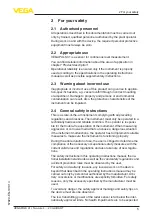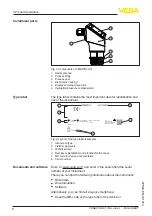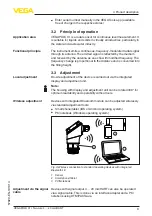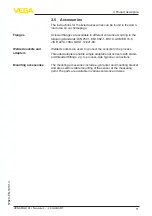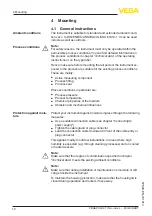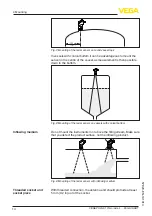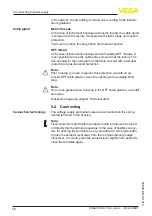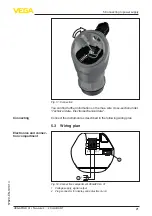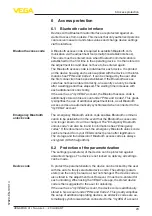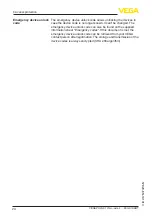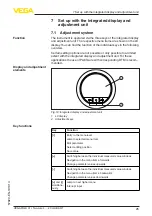
19
5 Connecting to power supply
VEGAPULS 31 • Two-wire 4 … 20 mA/HART
57820-EN-191014
5 Connecting to power supply
5.1 Preparing the connection
Always keep in mind the following safety instructions:
•
Carry out electrical connection by trained, qualified personnel
authorised by the plant operator
•
If overvoltage surges are expected, overvoltage arresters should
be installed
Warning:
Only connect or disconnect in de-energized state.
The data for power supply are specified in chapter "
Technical data
".
Note:
Power the instrument via an energy-limited circuit (power max. 100 W)
acc. to IEC 61010-1, e.g.
•
Class 2 power supply unit (acc. to UL1310)
•
SELV power supply unit (safety extra-low voltage) with suitable
internal or external limitation of the output current
Keep in mind the following additional factors that influence the operat-
ing voltage:
•
Lower output voltage of the power supply unit under nominal load
(e.g. with a sensor current of 20.5 mA or 22 mA in case of fault)
•
Influence of additional instruments in the circuit (see load values in
chapter "
Technical data
")
Use cable with round cross section for instruments with housing and
cable gland. To ensure the seal effect of the cable gland (IP protection
rating), find out which cable outer diameter the cable gland is suitable
for.
The instrument is connected with standard two-wire cable. If electro-
magnetic interference is expected which is above the test values of
EN 61326-1 for industrial areas, screened cable should be used.
Note:
Screened cable generally necessary in HART multidrop mode.
Note:
If the temperatures are too high, the cable insulation can be dam-
aged. Hence keep apart from the ambient temperature also the self-
heating of the instrument for the temperature resistance of the cable
in the connection compartment in mind
2)
.
If shielded cable is required, we recommend that the cable screening
be connected to ground potential on one side of the supply side.
Safety instructions
Voltage supply
Connection cable
Cable screening and
grounding
2)
With an ambient temperature ≥ 50 °C (122 °F) the connection cable should
be suitable for a temperature which is at least 20 °C (36 °F) higher.

